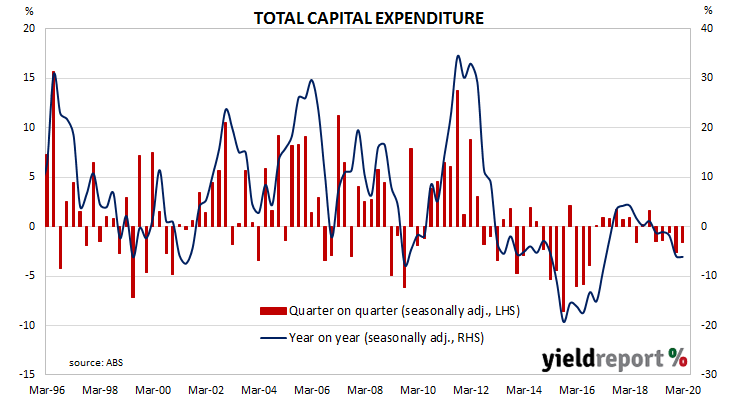Summary: Private capital expenditures down but better than expected; weakest since 2009; investment cuts on par with early-1990s recession.
Australia’s capital expenditure (capex) slump was thought to be coming to an end as investment in the mining sector reverted back to its long-term mean after a spike early in the decade. Total investment had begun to grow again, driven by investment in the services sector. However, contractions in recent quarters have become the norm.
According to the latest ABS figures, seasonally-adjusted private sector capex in the March quarter fell by 1.6%. This latest figure was well above the 2.8% contraction which had been expected and also above the December quarter’s revised rate of -2.6%. However, on a year-on-year basis, total capex still contracted by 6.1% after recording an annual rate of -5.9% in the previous quarter.
ANZ senior economist Catherine Birch said, “This was a smaller fall than expected, with rises in mining and manufacturing capex offsetting a decline in other industries.”
There was little reaction to the report in the Commonwealth Government bond market. By the end of the Australian trading day, the 3-year Treasury bond yield had ticked up 1bp to 0.27%, the 10-year yield remained unchanged at 0.87% while the 20-year yield slipped 1bp to 1.47%.
Prices of cash futures contracts moved to reflect a slight softening of rate-cut expectations but only among 2021 contracts. By the end of the day, June contracts implied a rate cut down to zero as a 49% chance, unchanged from the previous day. July contracts implied a 59% chance of such a move, also unchanged. Contract prices of months later in 2020 and through to mid-2021 implied probabilities ranging between 41% and 53%.

